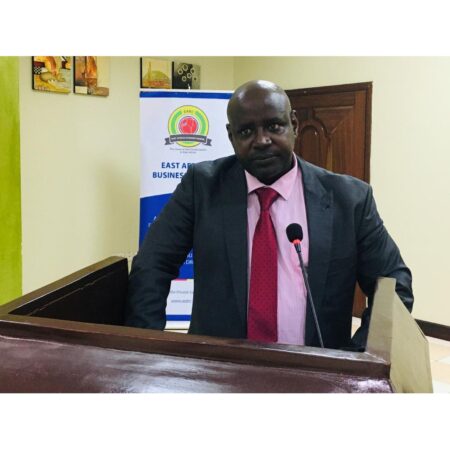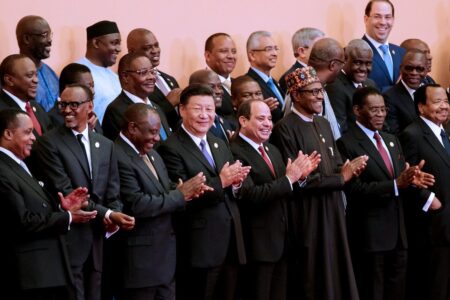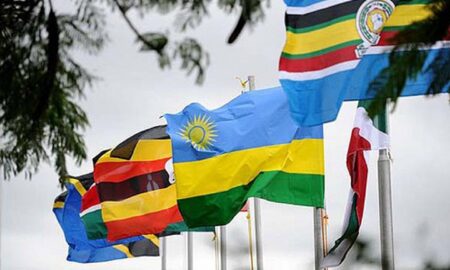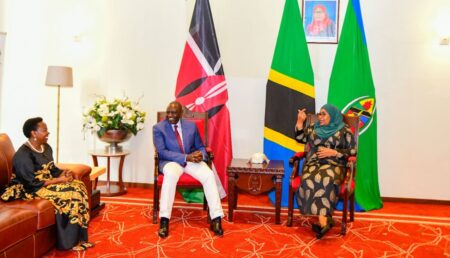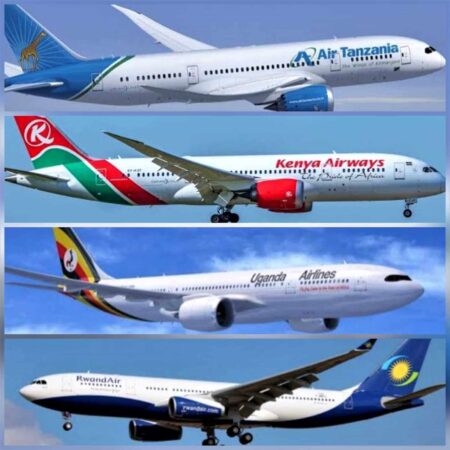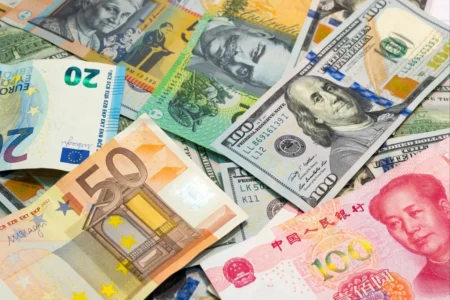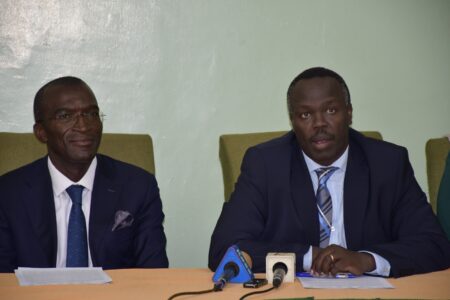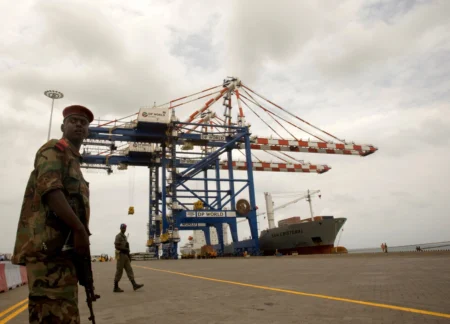- Africa’s new dawn: the rising role of digital and AI in agriculture
- Can Dangote Refinery Transform Africa Energy Ambition
- Gallup Survey: 80 per cent of Kenyan Workers Are Disengaged and Seek New Opportunities
- Madagascar Man Freed from 5KG Tumor After 15-Year Struggle
- How women in Africa are perceived and treated
- Sugar consumption in Kenya to Increase to 1.23 Million Tonnes
- Can Somalia and Turkey Oil deal Bring Change in Somaliland
- Remittances to Kenya dropped to $371.6 million in June, marking a six month low
Browsing: East African Community (EAC)
Intra-regional trade in Africa serves as the backbone of economic transformation. East African Community (EAC) member states are increasingly trading with one another and with other African countries. At the same time, they reduced their trade with other continents like Europe, Asia, and other parts of the world, shaping the intra-regional trade in Africa’s dream projected to boost commerce and livelihoods on the continent.
The seven countries in the region (as of 2023) increased their trade with the rest of Africa by $584.6 million to $4.3 billion in the fourth quarter of 2023, a 14 per cent rise compared with a similar period in 2022, according to the latest data by the EAC Secretariat.
Cross-border trade within the region also recorded a 12 per cent rise, from the previous year’s $2.6 billion to $2.9 billion in last year’s Quarter 4, indicating rising trade within the region over the year.
During …
- For the first time, the China-Africa Economic and Trade Expo (CAETE) came to Africa, with Nairobi playing host last week.
- According to the Ministry of Commerce of the People’s Republic of China, the forum is expected to spread across the continent, with different countries hosting it in the coming years.
- The Asian country is keen to continue its influence and trade dominance on the African continent.
China has launched a charm offensive on Africa in renewed efforts to tighten its grip on the continent. The West has recently shown growing interest in political and investment corporations, and China is seen as keen to continue its influence on the continent.
For the first time, the China-Africa Economic and Trade Expo (CAETE) came to Africa, with Nairobi playing host last week. According to the Ministry of Commerce of the People’s Republic of China, it is expected to go around the continent, with …
- East Africa’s economic growth is projected to grow at 5.3 and 5.8 per cent in 2024 and 2025-26, respectively.
- The World Bank projects African economies to grow by 3.4 per cent in 2024.
- However, faster and more equitable growth is needed to reduce poverty.
East Africa’s economic growth to lead the continent
Economies in East Africa are expected to spearhead growth in Sub-Saharan Africa this year amid increased private consumption and declining inflation, which are supporting an economic rebound in the region.
The World Bank’s latest Africa’s Pulse report indicates the East African Community is projected to grow at the fastest pace at 5.3 and 5.8 per cent in 2024 and 2025–2026, respectively, thanks to robust growth in the Democratic Republic of Congo, Kenya, Rwanda, and Uganda.
This is higher than the compounded growth for Sub-Sahara Africa, which, albeit rebounding from a low of 2.6 per cent in 2023, is …
- Non-tariff trade barriers are restrictions trade blocs impose to further their political and economic goals.
- Kenya and Tanzania are working on resolving non-tariff trade barriers that have stifled business between East Africa’s largest economies.
- Kenya is a crucial partner for Tanzania and is the largest source of African Foreign Direct Investment in Tanzania.
The East African Community
Countries have adopted regional trading blocs as a strategy to increase global competitiveness. The East African Community (EAC) member states are dedicated to enhancing economic efficiency and fostering regional integration through strategic investments using established industries.
EAC aims to position the Community as a single investment area, harmonising trade policies, investment incentives, and product standards.
At the beginning of its operations, EAC ended non-trade barriers (NTB) between member countries intending to liberalise trade. However, this affected the NTB imposed by the members, especially Kenya and Tanzania, who are critical traders in the market.…
- The open Skies Policy in civil aviation aims to ease international airlines’ access to national airports to increase the flow of tourists and develop their potential as regional air hubs.
- Kenya is seen to warm up to more international carriers, with the latest being flyDubai, which is now flying directly to the Moi International Airport, Mombasa, after launching last week.
- Apart from attracting foreign carriers mainly from Europe and the Middle East, airlines from Kenya, Uganda, Tanzania, Rwanda, and other EAC states will operate across borders without restrictions.
The Open Skies Policy in Kenya
Kenya is slowly heeding calls by the private sector to open its skies to more international airlines seeking to fly directly to the country’s Coast, a leading beach destination preferred mainly by Europeans.
This comes as the government also banks on the recently unveiled “visa-free” to open the country to more visitors, aiming to grow the …
- Kenyans in the diaspora sent home $4.19 billion in 2023 as remittance inflows to the East African country hit an all-time high.
- The high numbers signal that Kenyans living and working in the diaspora defied the inflationary pressures they still experienced to send more money back home.
- Since the height of the COVID-19 pandemic, many Kenyans in the diaspora have had to cut spending to navigate inflationary pressures and afford to send money back home.
Kenyans in the diaspora sent home $4.19 billion in 2023 as remittance inflows to the East African country hit an all-time high, boosting foreign exchange reserves and support for families in the wake of tough economic times.
According to the Central Bank of Kenya (CBK), the figures are up by four per cent compared to the $4.02 billion sent in 2022.
“The inflows were strong in December 2023 at $372.6 million compared to $355.0 million …
- East Africa’s insurance sector regulators held the 7th Special Meeting of the Executive Committee (ExCo)of the East African Insurers Supervisors Association (EAISA) in Kenya on Friday.
- The East African insurance supervisors have resolved to promote the development of cross-border insurance products and services jointly.
- The members have also agreed to coordinate joint innovation initiatives relating to insurance development in member states.
Joint resolve for East Africa’s insurance sector supervisors
The East African insurance supervisors have resolved to jointly promote the development of cross-border insurance products and services to address the challenges of low insurance uptake and penetration in the region.
The members have also agreed to coordinate joint innovation initiatives relating to insurance development in member states.
Working under the auspices of the East African Insurance Supervisors Association (EAISA), the supervisors, at their 7th Special Meeting of the Executive Committee (ExCo) meeting held in Eldoret, Kenya, also agreed to employ …
- Annual tourist arrivals to the EAC are anticipated to increase to about 14.05 million by 2025, from the 7.2 million recorded in 2019.
- Kenya targets 5.5 million international tourist arrivals and a $6.3 billion annual contribution by 2028.
- Fast-tracking of the EAC Single Tourism Visa remains critical to sell the region as a single tourism investment hub.
Diversification of products beyond traditional attractions and joint promotion of the region is a catalyst to revamping the East African Community as a single tourism market. This call on a single tourism market was underscored by regional Ministers responsible for EAC Affairs and Tourism and Wildlife Management who converged for the opening of the 3rd EAC Regional Tourism Expo (EARTE’23) and the Magical Kenya Travel Expo in Nairobi, Kenya.
The three-day Expo that kicked off on Monday provides an opportunity for EAC Partner States to create awareness of tourism investment opportunities and …
- The strategic manoeuvrings of the United States in the DRC’s cobalt mines serve as an international yardstick for how well it can balance economic aspirations with ethical imperatives.
- The DRC has become embroiled in a complicated geopolitical chess game, and it is no longer merely a national asset but a worldwide commodity.
- The strategic importance of cobalt from the Congo to the United States exemplifies the necessity for a multifaceted solution that upholds human dignity in the workplace, safeguards natural resources, and encourages economic resilience.
Conspicuously rising to critical importance on a global scale, cobalt has been overshadowed by the world’s precious metals. Although it is sometimes overlooked in resource talks in favour of its more glamorous cousins, gold and oil, this silvery-blue element—a byproduct of copper and nickel mining—is an essential component of modern technology.
Nevertheless, it is a mineral of the future because it powers electronic devices such …
- The EU is supporting efforts in the Horn of Africa that will boost regional economic integration and trade.
- Djibouti’s major trading partner countries include Ethiopia and troubled Somalia.
- Trade Mark Africa is helping implement a single window system which is already in use across EAC.
The EU has expressed its support for Djibouti’s plan to enhance connectivity within the Horn of Africa, a move that will promote trade with Ethiopia, one of the region’s biggest trade partners.
This collaboration is in sync with the African Alliance for e-commerce, a consortium comprising 18 member countries, dedicated to advancing the Single Window concept. This alignment adheres to the recommendations set forth by international institutions.
A pivotal project within the Alliance is the establishment of a Regional Single Window, designed to seamlessly interconnect all national platforms. The overarching goal is to streamline trade processes, bolstering the competitiveness of African nations on the global …





